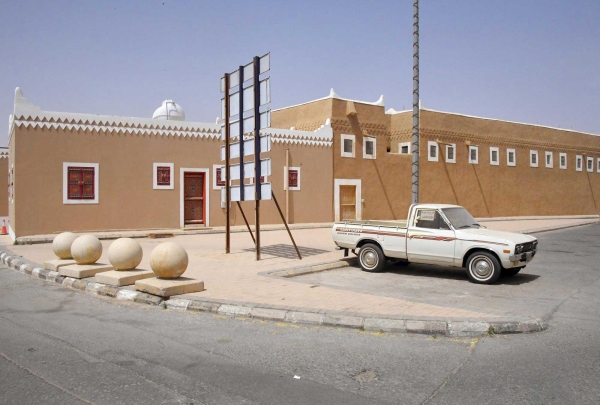


Al-Bassam Heritage House is a traditional house located in Unayzah Governorate in Qassim Province, in the central part of the Kingdom of Saudi Arabia. It reflects the development of ancient architecture in Najd and is considered one of the cultural heritage assets in the Kingdom.
The house is located near the western gate of the old city of Unayzah, known as 'Bab al-Khala,' next to the traditional al-Musawkaf Market, and covers an area of approximately 3,500 m.
Construction of al-Bassam Heritage House
Construction of al-Bassam Heritage House began in 1955 and was completed in 1959. It was restored in 2000 and has since become a primary venue for many heritage, entertainment, and social events, as well as national celebrations. The house also attracts tourists visiting the region.
The architectural style of al-Bassam Heritage House
Al-Bassam Heritage House was built using various materials, including mud as the primary material, stone for the foundations, gypsum for binding the stones in the foundations and columns, and wood for the roofs, doors, and windows.
Decorations of al-Bassam Heritage House
The decorative patterns and designs inside al-Bassam Heritage House, in its main corridors, and on its exterior facades are diverse, including:
- Windows (al-Masari'): These are windows in the sitting rooms, with openings measuring 1.8 m in length and one m in width, situated forty cm above the ground.
- Recesses (al-Rozana): These are niches within the walls for daily use items.
- Gesso Cabinet (al-Kammar): A gypsum cupboard, decorated and divided into shelves for pitchers and dallahs, with a fire pit nearby.
Elements of al-Bassam Heritage House
The house consists of two floors comprising thirty rooms of various sizes, including bedrooms, storerooms, and guest reception rooms that are distinguished by their length of ten m. The family wing is divided into two sections. One section includes several rooms designated for various uses, such as a bridal room, a birthing room, a room for women's jewelry, a nursing room, an old weapons room, and rooms for grinding grains and storing dates. The other section is reserved for receptions, featuring a small coffee area. The rooms are distributed on the left side of the women's entrance, and there is also a large garden with a dedicated annex for related activities, as well as a courtyard designated for livestock. The house provides informational services about its components through explanatory panels and the use of visual and audio technology in both Arabic and English. The Heritage Commission has set visiting hours daily from 9:00 a.m. to 9:00 p.m.
Related quizzes
Related articles
